Lizzard_One
The modular smart display that adapts to your space, your style, and your smart home.
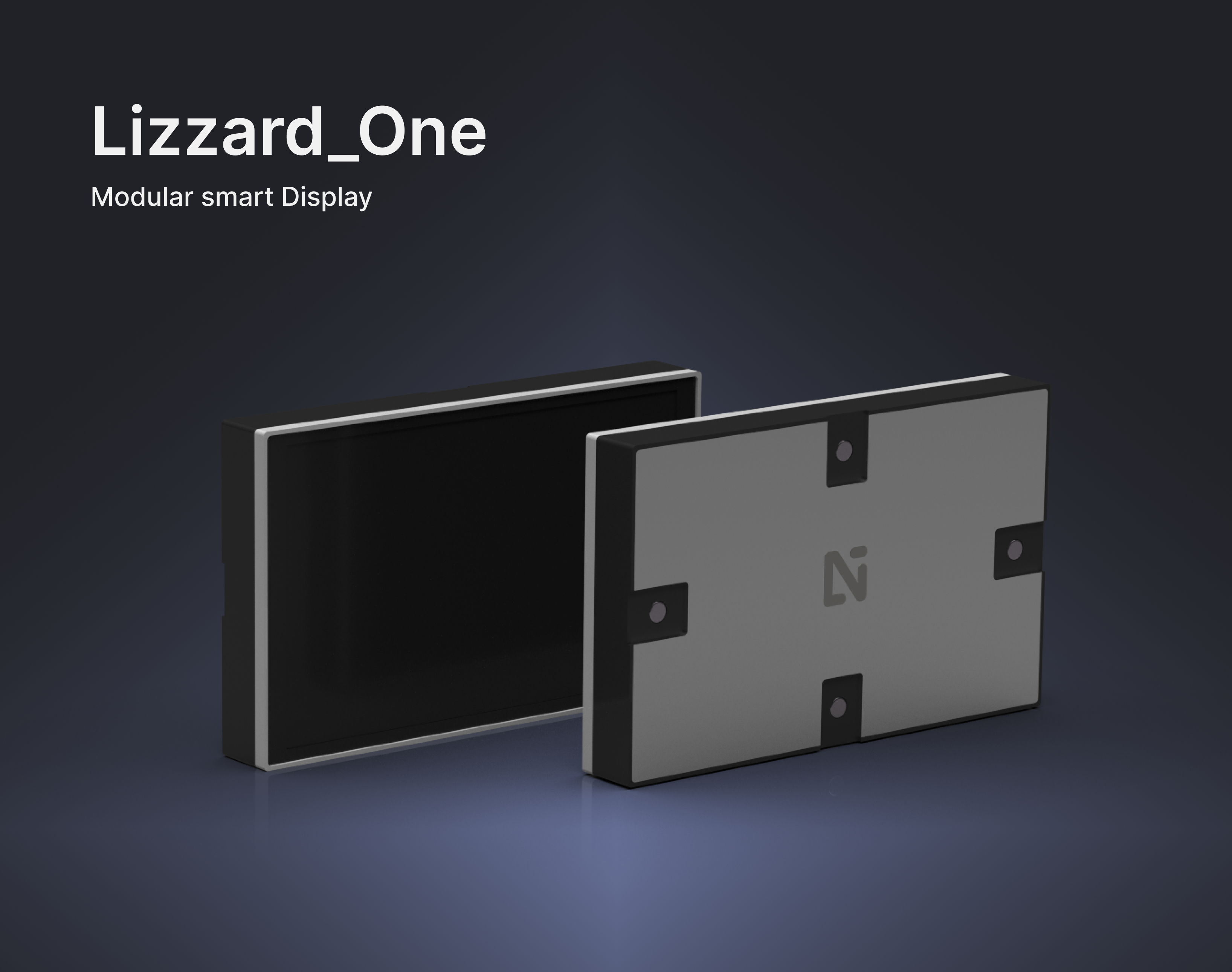
Lizzard_One
A modular wall-mounted smart display system inspired by large, configurable displays used at events and conventions. The system aimed at providing aesthetic enhancement for spaces like business environments or gaming rooms and was controllable via smartphone, compatible with smart home systems and AI assistants.
The goal:
Design and develop an affordable, modular, and expandable LCD-based smart display system that users could customize and control effortlessly through their smartphones.
My role:
Co-founder, CFO, Product/project manager.
Technologies:
Python, Flutter, Raspberry Pi, Stable Diffusion, Figma.
Skills:
Product Design, App Development, Hardware Prototyping, AI Implementation.
Methods:
Prototyping, Technical Research, Competitive Analysis, Interviews.
The Story Behind the Lizzard_One
During my minor in Entrepreneurship, our startup, Lizz Innovations, set out to create an innovative modular display solution called the Lizzard_One. Inspired by the impressive modular screens often seen at conventions, our aim was to offer an affordable and easily customizable solution using LCD panels. These panels could seamlessly connect to form various shapes and sizes, primarily for aesthetic enhancement rather than traditional viewing purposes.
We focused on building a strong technical foundation, ensuring that the modular system was functional, scalable, and easy to integrate with smart home platforms. After the minor concluded, we continued working on the project as a startup, refining the product and exploring its potential applications in both business and home environments.
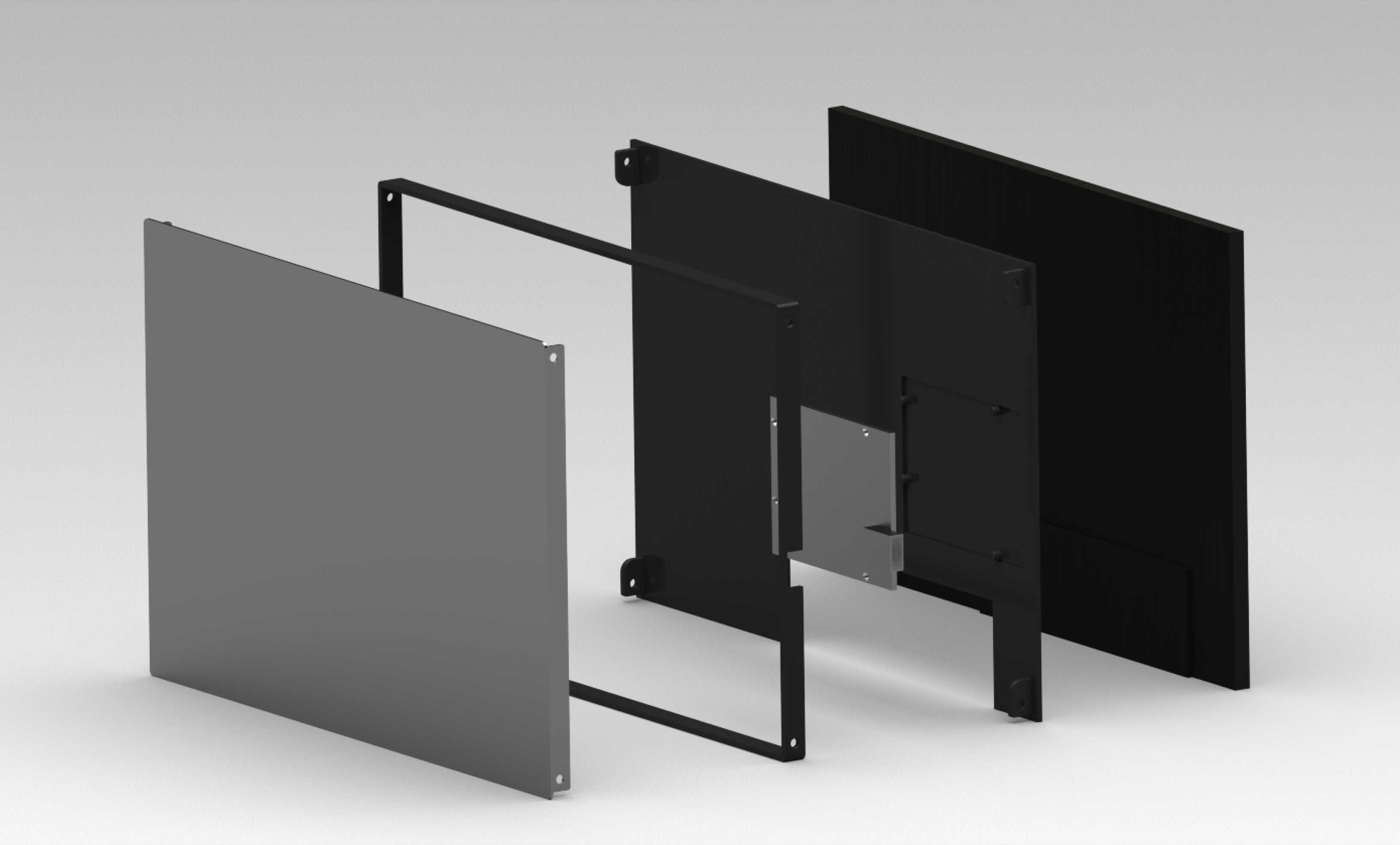
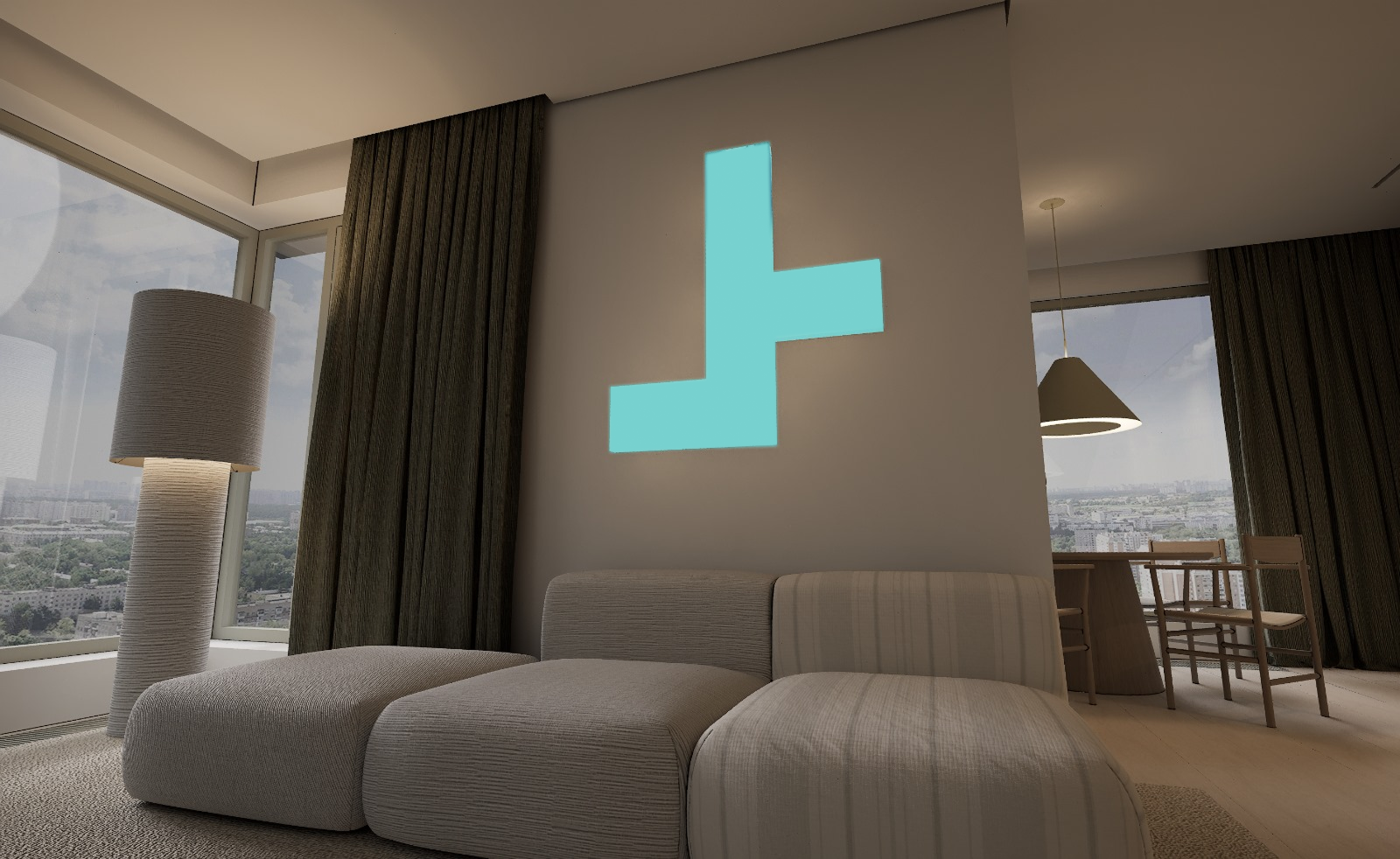
Understanding the Problem
We saw an opportunity in the way people use smart lighting and digital displays to personalize their spaces. Smart lighting is popular, especially among gamers and interior enthusiasts who use LED strips and ambient lighting to transform their rooms. However, lighting alone is limited to colors and effects, whereas digital displays provide dynamic content.
With Lizzard_One, we aimed to create a transformative display system that could instantly change the look and feel of a room. For example:
In living rooms,
Lizzard_One could display digital artwork or scenic visuals for a refined, aesthetic touch.In gaming setups,
it could switch to Game Mode, displaying interactive elements, game-related visuals, or reactive lighting efIn workspaces,
it could be used for ambient productivity visuals or even interactive dashboard displays.With smart home integration,
users could control Lizzard_One through voice commands or automation.
This system wasn’t just another smart light—it was a modular, customizable digital environment that adapted to different moods and functions with a single tap or voice command.
Our Technical Solution
Our modular smart display system allowed users to:
Customize Display Configurations:
Easily connect multiple LCD panels into personalized layouts.Control via Smartphone:
Intuitive mobile app integration for effortless content management.Smart Home & AI Integration:
Compatibility with platforms like Google Home and AI assistants, and even Discord.Aesthetic Flexibility:
Display artwork, images, or dynamic AI-generated visuals to enhance interior spaces.
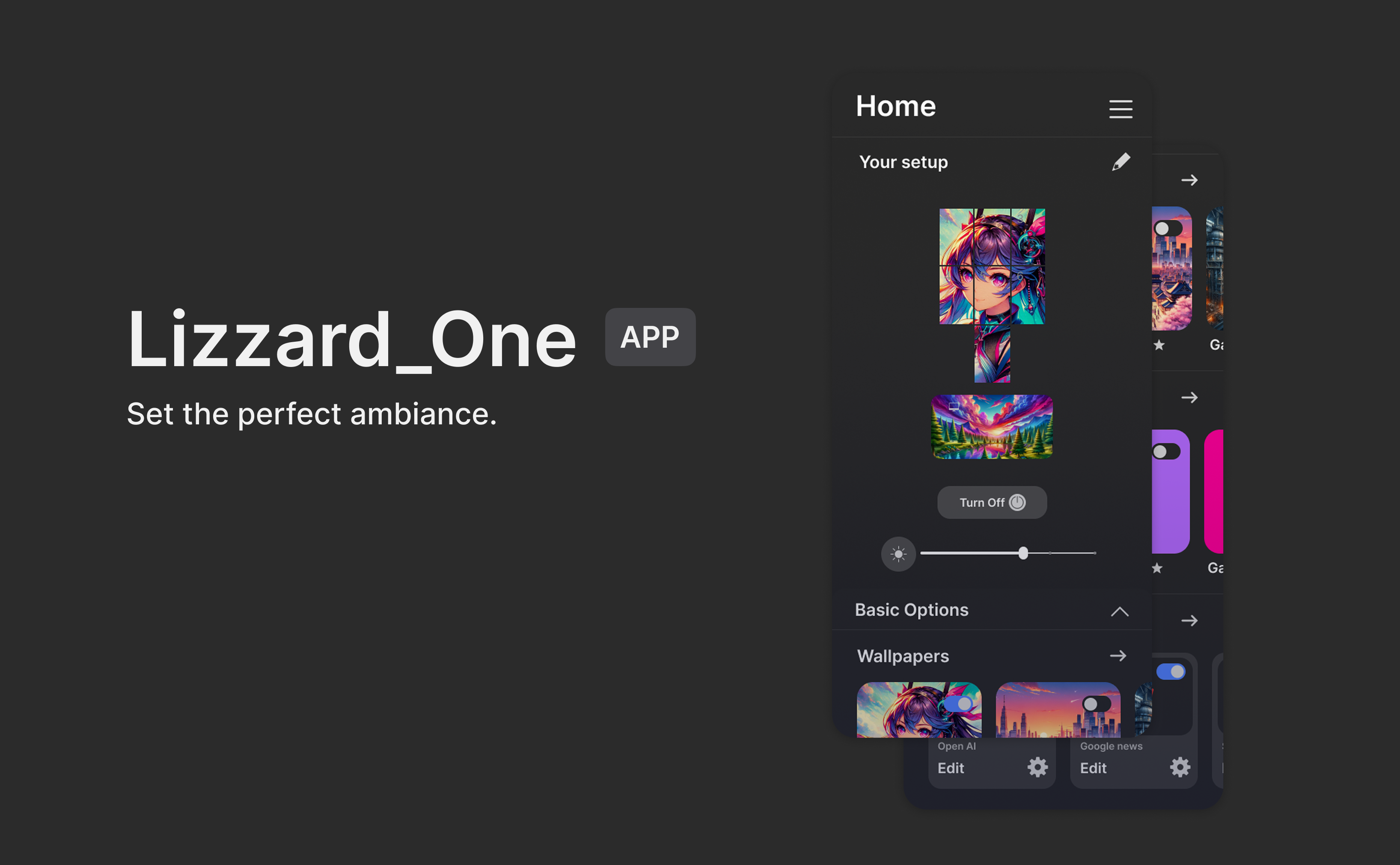
Development Journey
1. Concept & Inspiration
We started inspired by visually striking modular displays seen in commercial and event settings. Our goal was an affordable and accessible version tailored for interior aesthetics rather than broadcasting purposes.
2. Technical Development & Prototyping
As the technical lead, I managed the product design and app development, created prototypes using Raspberry Pi, and experimented with Python and Flutter for seamless integration. Additionally, we explored AI-generated visuals using Stable Diffusion for dynamic content.
3. Market & User Research
We researched trends in smart home technology, digital displays, and gaming setups, conducting interviews with interior designers and gamers to refine the product concept. Our findings validated the need for a dynamic, customizable digital display beyond traditional lighting solutions.
4. Evaluation & Conclusion
Despite strong technical execution, practical challenges such as cost-effectiveness and competition from simpler alternatives meant the product wasn't viable long-term. We ultimately discontinued the project after completing further exploration beyond the minor.

Key Results & Lessons Learned
Enhanced Market-Oriented Approach:
Improved my ability to identify and validate user needs more effectively before committing to technical solutions.Technical Skill Growth:
Advanced my technical abilities significantly in hardware integration, Python-based prototyping, app development with Flutter, and AI-driven content generation.Product Design Expertise:
Gained valuable experience creating multiple hardware prototypes and intricate hanging systems, refining my approach to practical product design.
Let's talk.
My work
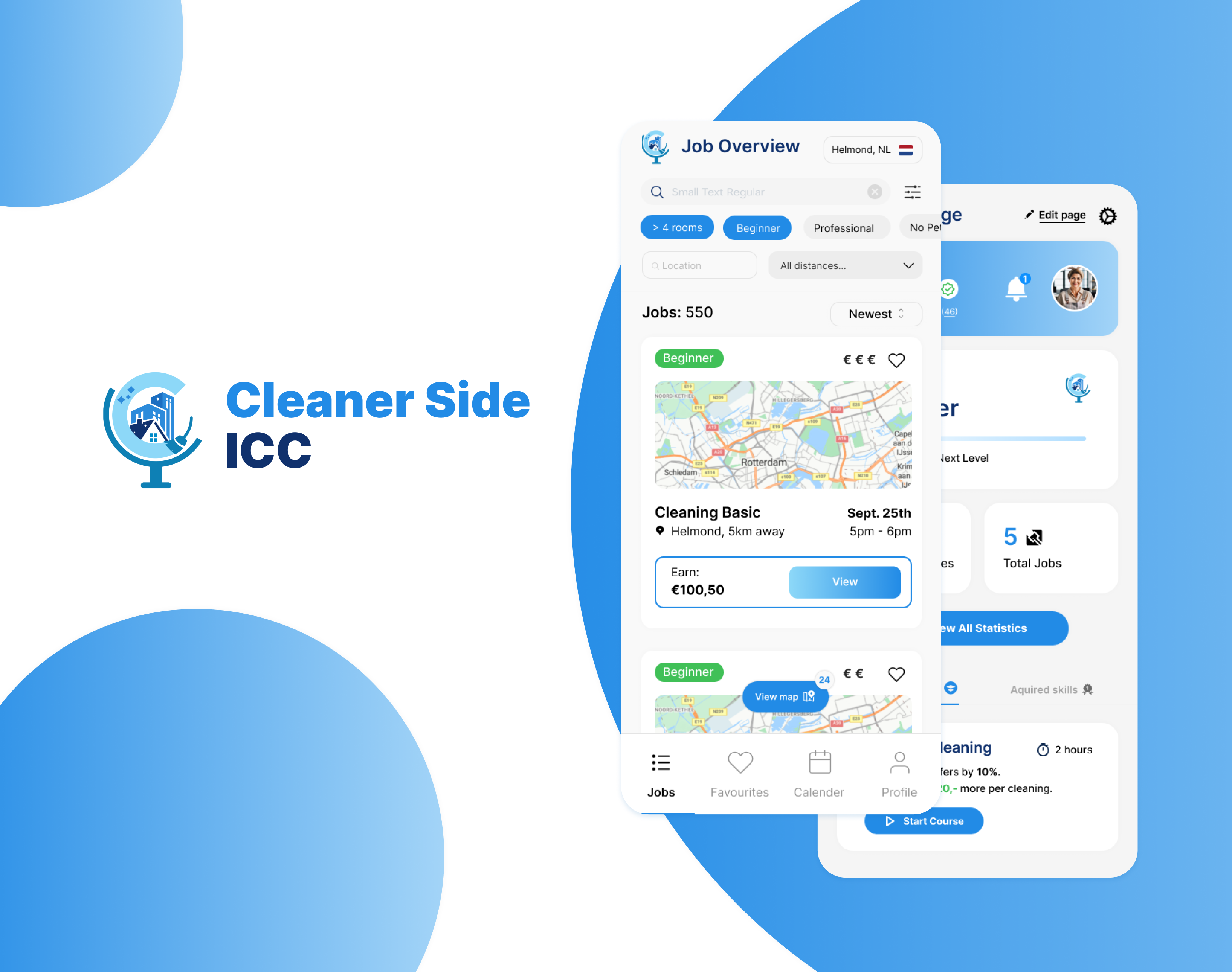
ICC Cleaner side
ICC Cleaner Side is a user-centric platform that connects freelance cleaners with job opportunities. Designed for accessibility, the platform simplifies job matching, scheduling, and trust verification while ensuring a seamless experience for both cleaners and clients. The project focused on UX research, intuitive UI design, and an efficient onboarding process, later handed off to a development team for implementation.

Hang On
Hang on was a team project withing Fontys. We had to produce an application that would improve the hang boarding experience for boulderers. Hangboarding can help with finger/grip strength improvement. This is an especially important part of bouldering/climbing.
